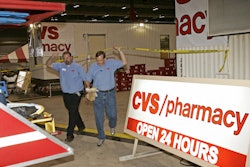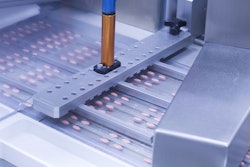
Packaging World:
What percentage of e-commerce sales and global commerce comes from life sciences products (be it over-the-counter pharmaceuticals, nutraceuticals/supplements/vitamins, medical products, etc.), and what trends do you see evolving in these markets?
Michael Kuebler:
While we don’t have exact figures on what percentage of those categories are currently sold through e-commerce channels, one trend is the growth of mail-order prescription deliveries to individual patients. Health systems are looking to mail-order prescription services as a revenue generator to supplement network memberships. According to the American Journal of Healthcare Pharmacy, mail-order pharmaceutical deliveries made up 23% of total expenditures in 2016 (up 6.7% over the previous year with continued growth expected). Through companies like Edgepark Medical and CCS Medical, for example, consumers are increasingly able to purchase medical supplies and devices to manage home procedures independently. These individually packaged and boxed items must take into account the same e-commerce packaging considerations that other consumer product manufacturers have followed for many years, with a few added steps.
What are the transit considerations for life science transport and what makes for good package design for these products?
The basic transit considerations for life science product transport are consistent with most other products. The biggest areas of concern are the effect of shock, vibration, compression, and atmospheric conditions on the package as well as its contents.
The differentiating factors tend to involve the type of product being shipped as well as the product’s end use. Is the product sensitive to changes in temperature or humidity? Could it be exposed to environments that would compromise sterility?
One of the main differences involves the implications of varying atmospheric conditions. Additional temperature cycling or temperature soaking as a preconditioning step could be required. A common industry testing standard for cold chain requirements is ISTA 7E. This protocol provides steps to qualify the thermal properties of a given package. In the case of sterile medical devices, the ISO 11607 testing standard is required for manufacturers to certify that their packaging will withstand the supply chain and remain sterile for patient use. The standard includes evaluations of stability (aging), package strength (burst, tear, and puncture resistance, for example), and integrity testing. Depending on the device (if it includes a drug product of some sort, for example), additional testing may be required to evaluate that dosage accuracies and potency perform as designed.
For products that do not have atmospheric or sterility concerns, ASTM- and ISTA-based package testing standards can be used to evaluate packaging for small parcel deliveries. The most common of these standards is ISTA 3A, which combines preconditioning, shock, and vibration tests.
What percentage of these life science products require special temperature/humidity conditions from the point of manufacture to the patient?
It is difficult to say what percentage of these products require special atmospheric conditions. This could cover a wide variety of pharmaceutical and device products on the market today. Typically, if these conditions are required, temperature cycling or cold chain testing is required. Testing needs to validate that a controlled package can maintain the product at the desired temperature (usually 2°C to 8°C) throughout the typical supply chain.
Are life science shipments transported primarily by ground, or by air, sea or rail?
Depending on the device or pharmaceutical product, one could theoretically use any or all of these transportation methods for life science and medical products. The life science market and manufacturing of these types of products has become more and more global, requiring a variety of different transportation methods to fulfill demand. Traditionally, road and air have been the primary transport methods. In the case of time-sensitive life science products (limited shelf life, for example), air shipment is definitely a requirement.
We’ve heard of the use of drones for drug shipments to remote global areas. Do you see this becoming a more frequent delivery method for life science products?
While this is certainly an idea for last mile delivery in urban and suburban areas going forward, there are still many hurdles to pass before drones could be used in a large way. FAA regulations, in addition to security, weather, and other considerations will need to be taken into account before drone usage can be implemented. Once used on a larger scale, however, it will most likely require a different set of testing requirements to account for potential large drops or impacts.
Drone delivery is certainly a viable option for remote delivery. Humanitarian organizations have been using helicopters and aircraft for many years, and drones more recently, to deliver critical medical supplies to remote locations. However, the packaging used for these deliveries must be prepared to face and protect fragile supplies from a huge variety of harsh, unpredictable conditions, and further developments will likely be necessary if deliveries will be traveling through the elements via drone rather than safely closed in a cargo hold.
What do you see in terms of regulations regarding e-commerce shipments, particularly for e-commerce shipments of life science products?
Most evaluations of products or packaging that flow through the e-commerce supply chain (regardless of whether it’s a consumer product or life science product) utilize several key standards:
• ISTA 6-Amazon.com is a relatively new standard under development between ISTA (International Safe Transit Assn.), its members, and Amazon.com with the intent of improving real world simulation of packaging in the e-commerce supply chain while helping to reduce overpacking and waste.
• ISTA 3A and ASTM D7386 are used for small parcel shipments.
• ISTA 7E can be used for cold chain logistics.
At this point, one of the only package testing requirements we tend to see is for sterile medical devices (ISO 11607). This requirement is not dependent on the channel or supply chain, per se, but simply for the overall integrity and sterility of the package, regardless of how it is shipped. Again, as the pharmaceutical and medical device industries expand into various e-commerce, mail order, or direct to consumer sales channels, we will continue to see improvements in package design and evaluation to ensure that the products are delivered safely and operate as designed for patients.


























